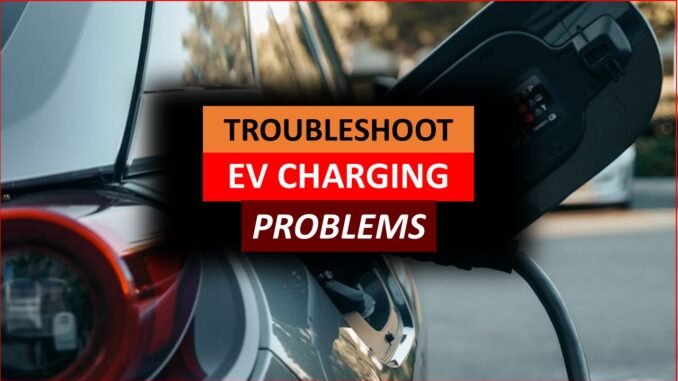
Electric vehicles (EVs) are more popular than ever. In the UK alone, there are now over 1.2 million EVs on the road—a massive leap from just 98,000 in 2019 (The Times). But with more EVs comes a common frustration: charging issues. Whether it’s a charger that won’t start, a connection that keeps dropping, or an EV that refuses to charge at full speed, these problems can be both annoying and disruptive.
Most of these issues happen with AC charging, the most common method for home and workplace charging. While AC chargers are generally reliable, they can be affected by power supply issues, software glitches, or even the weather. In some cases, switching to a DC Charger can resolve charging problems more efficiently. Before you panic or call an electrician, here are three key things to check first.
#1. Start with the Basics: Power Supply and Connections
It sounds obvious, but the simplest solutions are often the most overlooked. If your EV isn’t charging, run through these quick checks:
- Is the charger properly plugged in? Loose connections are more common than you’d think. Make sure everything is securely in place.
- Has a fuse tripped? If you’re charging at home and suddenly lose power, check your fuse box. EV chargers draw a lot of electricity, which can trip circuit breakers.
- Are the cables in good condition? Inspect for frayed wires, loose connections, or visible wear and tear. A damaged charging cable could be the culprit.
A driver in Manchester kept having his home charger cut out randomly. The issue? A worn-out charging cable that kept losing connection. Swapping it for a new one solved the problem (Cita EV).
#2. Check for Software or Compatibility Issues
Believe it or not, many charging problems stem from software glitches or compatibility issues. Modern EVs and chargers rely on firmware to communicate, and if there’s a mismatch, things can go wrong.
Here’s what to check:
- Firmware updates: If your EV or charger hasn’t had an update in a while, check if one is available. Manufacturers often release patches to fix charging bugs.
- Charging station compatibility: Not all chargers work seamlessly with every EV model. If you’re at a public charger and it’s not working, try another one nearby.
- Soft reset: Some EVs and chargers have a reset option, which can clear minor software glitches.
A Birmingham EV owner was experiencing slow charging speeds at home. After updating the charger’s firmware, the problem disappeared (Cita EV).
#3. Consider Environmental Factors: Heat, Cold & Overuse
Temperature plays a bigger role in EV charging than many people realise. Extreme heat or cold can slow down, stop, or even damage charging sessions.
Heat-Related Charging Issues:
- Overheating chargers – If your home charger sits in direct sunlight all day, it could overheat and shut down. Moving it to a shaded, well-ventilated area can help.
- Thermal protection mode – Some EVs automatically reduce charging speed to prevent battery overheating, especially in hot weather.
Cold Weather Charging Issues:
- Longer charging times – In freezing temperatures, batteries take longer to charge. If your EV supports pre-conditioning, use it to warm the battery before charging.
- Public chargers struggling in extreme cold – If a public charger isn’t working in winter, try a different one.
A London driver found that his charger kept shutting off during a summer heatwave. The fix? Moving it to a cooler, shaded spot (Cita EV).
When to Call a Professional
If you’ve gone through all the basic troubleshooting steps and your EV still won’t charge properly, it might be time to get expert help. Here are a few red flags:
- Burnt smells or sparks – This could indicate an electrical fault. Stop using the charger immediately.
- The charger keeps cutting out or overheating – If this happens regularly, a professional should inspect it.
- Your home’s wiring isn’t up to standard – Older wiring may struggle to handle the high power demand of EV chargers.
Final Thoughts
EV charging problems can be frustrating, but in many cases, the solution is simple—checking connections, updating software, or adjusting for weather conditions. Running through these steps can often fix issues without needing a costly service call.
Still having trouble? It might be time to contact a qualified electrician or charger technician. Keeping your charger in good condition and staying on top of software updates will help you avoid most common EV charging headaches.